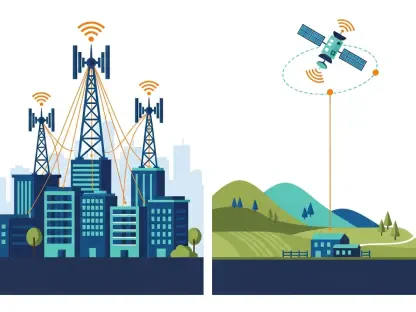In this interview, we have the pleasure of speaking with Vladislav Zaimov, an experienced telecommunications specialist renowned for his expertise in enterprise telecommunications and the risk management of vulnerable networks. With significant changes on the horizon for satellite communications regulation, Vladislav offers his insights into the upcoming proposals by the Federal Communications Commission (FCC) that seek to modernize rules dating back to the 1990s.
What is the main purpose behind the FCC’s proposal to revamp the 1990s-era satellite rules?
The FCC is aiming to modernize outdated regulations that were crafted during a different era of satellite technology. The primary purpose is to enable current and future satellite broadband services to operate more efficiently in the crowded radio frequency spectrum. By revisiting these rules, the FCC hopes to create a more flexible and performance-based framework that allows for better coexistence between modern non-geostationary satellites and legacy geostationary systems.
How do companies like SpaceX and Amazon’s Project Kuiper view the current power limits imposed on non-geostationary satellite systems (NGSOs)?
Companies such as SpaceX and Amazon’s Project Kuiper see the current power limits as restrictive and outdated. They argue that these limits, which were designed in the 1990s, do not account for the advancements in satellite technology and capabilities. By imposing these constraints, these companies feel that the full potential of next-generation broadband services is being held back, which affects their ability to deliver high-speed, reliable internet to consumers.
What specific changes is the FCC considering in relation to the power limits on NGSO satellites?
The FCC is considering whether to replace the existing EPFD (equivalent power-flux density) limits with new, more flexible and performance-based criteria. This shift intends to better reflect modern satellite capabilities and the actual interference scenarios that exist today. The focus is primarily on power restrictions in the 10.7–12.7 GHz, 17.3–18.6 GHz, and 19.7–20.2 GHz frequency bands.
What impact is the FCC expecting these changes to have on next-generation satellite broadband services?
The expected impact is significant in terms of boosting the speed, performance, and coverage of satellite broadband services. By removing or modifying these outdated technical constraints, the FCC believes satellite operators will be in a better position to innovate and offer more competitive high-speed Internet options. This should also help in bridging the digital divide by making robust Internet access more accessible in underserved and remote areas.
Why does FCC Chairman Brendan Carr believe this proposal will benefit consumers?
Chairman Brendan Carr sees these changes as a means to provide consumers with more choices for affordable, high-speed internet. He states that by eliminating technical barriers that have been in place for decades, the market will be more competitive, which can drive down prices and improve service quality. Carr is confident that these regulatory updates will enhance the overall Internet experience for Americans by promoting faster connections and broader availability.
Can you explain the controversy surrounding Starlink’s deployment at the White House?
The controversy revolves around the allocation of public funds to a company led by Elon Musk, a figure some lawmakers view as politically aligned with the previous administration. Concerns have been raised about the objectivity and fairness of funding decisions, especially given Musk’s perceived influence during the Trump administration. Additionally, there is skepticism about whether awarding these funds to Starlink aligns with broader public policy goals or if it serves more specific interests.
Besides satellite connectivity, what other items are on the FCC’s docket for the upcoming meeting?
The FCC’s upcoming meeting will cover several important topics beyond satellite connectivity. This includes proposed new rules for the Lower 37 GHz band to balance federal and non-federal use of the spectrum. Additionally, there are measures to expand robocall protections by mandating caller ID authentication on non-IP networks and proposals to clarify foreign investment reviews for communication licenses across wireless, broadcast, and aviation sectors.
What role does FCC Chairman Carr believe satellite services will play in America’s space economy?
Chairman Carr believes satellite services are crucial for the development of America’s space economy. He has emphasized the need for regulatory frameworks that support innovation and growth in this sector. Carr was particularly vocal about his disapproval of the Biden administration’s decision to revoke Starlink subsidies, arguing that it stifled progress in connecting Americans to essential Internet services. Recently, Carr’s agency approved higher power levels for Starlink’s direct-to-cell service, reflecting his commitment to supporting satellite ventures.
How do critics view the current limitations on satellite systems?
Critics argue that the limitations imposed in the 1990s are outdated and not reflective of the technological advancements and operational realities of modern satellite systems. They believe these constraints are hindering the potential for innovation and improvement in satellite broadband services, ultimately limiting their ability to enhance connectivity and service quality for users.
Are there any other significant regulatory changes the FCC is considering beyond those mentioned in the article?
The FCC is continually reviewing and updating regulations to keep pace with technological advancements and changing market dynamics. Other potential changes could involve updates to spectrum allocation, cybersecurity measures for telecommunications networks, and efforts to streamline the deployment of new communication infrastructure. These initiatives are part of the FCC’s broader goal to foster a robust and secure communications landscape that meets the needs of the future.
Do you have any advice for our readers?
My advice would be to stay informed and engaged with regulatory developments, especially those that impact technologies you use and rely on daily. Understanding these changes can not only help you make better choices as consumers but also enable you to advocate for policies that support progress and innovation in telecommunications.









